Lumbar Spinal Stenosis
Lumbar spinal stenosis is a medical condition in which the spinal canal narrows and compresses the spinal cord and nerves in the lower back. This can cause pain, numbness, weakness, and other symptoms in the legs, buttocks, and lower back.
Lumbar Spinal stenosis occurs when the area inside the lower backbone is too short. This can put pressure on the spinal cord and nerves that run through the spine. Spinal narrowing mostly occurs in the lower back. Some individuals with lumbar spinal stenosis have no signs. Others may feel pain, tingling, numbness, and muscle deficiency. Symptoms can get more harmful over time.
Physiotherapy treatment and exercise will improve the blood flow to the stenosis area, carrying required oxygen and nutrients and flushing away harmful metabolites. Exercise will maintain the muscles near the spine, allowing to take the pressure off of the bones and different static designs in the back.
The most typical reason for lumbar spinal stenosis is wear-and-tear differences in the spine associated with arthritis. Individuals who have extreme cases of spinal stenosis may require surgery. Surgery can form more space inside the backbone. This can reduce the symptoms induced by stress on the spinal cord or nerves. While surgery can’t heal arthritis, so arthritis pain in the spine may continue.
What is Lumbar Spinal Stenosis?
The phrase “spinal stenosis” refers to the pain symptoms and not the narrowing itself because not all people with spinal narrowing experience them. Therefore, a diagnosis of spinal stenosis is only made when symptoms are experienced, The most common reason for spine surgery in people over 65 is lumbar spinal stenosis, which is a significant reason for disability in old age people.
Due to degenerative changes in the spinal canal, there is less space available for the neuronal and vascular components in the lumbar spine in this degenerative disorder. It can result in radiating pain and numbness in the leg, thigh, or buttock, especially when walking or standing for an extended period. Usually, when a patient rests, sits down, or bends forward, the discomfort subsides. This is an aging-related condition that primarily affects those over 60.
Vertebral bones are placed on top of one another to form the lumbar spine. Discs that maintain the space between the bones open and permit mobility to connect them.
The central spinal canal is where the spinal cord travels from the brain to the lower body. The lateral foramen, which is located between each vertebra, is a small opening on each side. The spinal cord contains nerves that arise from each side gap between the spine’s bones and leave there. These nerve branches transmit data to and from the brain from all of the body’s tissues.
There may be additional bone growth or spurs that develop as the spine’s discs and joints begin to wear out. The lateral and central foramen’s nerve structures may start to get squeezed by the additional expansion. This compression may be exacerbated by disc degeneration.
Causes of Lumbar Spinal Stenosis
- Bone spurs
- Herniated disks
- Thick ligaments
- Tumors
- Spinal injuries
- Arthritis
Symptoms of Lumbar Spinal Stenosis
- Symptoms of lumbar stenosis can vary but the typical presentation is:
- Standing causes more pain. prolonged standing or walking causes pain to worsen.
- Either one or both legs are in pain.
- Sitting decreases the pain.
- Flexibility exercises for lumbar stenosis reduce the pain.
- Moving forward while stooping
- changes the legs’ sensory or muscular strength
Diagnostic test for Lumbar spine stenosis:
Your doctor may ask you about your problems and medical history. You may check a physical. You also may require an imaging test to assist locate the problem.
- X-rays
- MRI{Magnetic resonance imaging}
- CT-scan {Computerized tomography}
Treatment of Lumbar Spinal Stenosis:
Medications
Your doctor might prescribe:
- Nonsteroidal anti-inflammatory drugs (NSAIDs). If typical pain relievers do not provide sufficient relief, medicine NSAIDs might be useful.
- Antidepressants. Lightly amounts of tricyclic antidepressants, like amitriptyline, can support to decrease chronic pain.
- Anti-seizure drugs. Some anti-seizure medicines, like gabapentin (Neurontin, Gralise), are prescribed to ease pain caused by injured nerves.
- Opioids. medicine like oxycodone (Oxycontin, Roxicodone, and others) and hydrocodone (Hysingla ER) may be habit-forming.
Steroid shots
Your nerve roots may become irritated and crew at the sites where they are being compressed. Giving a steroid drug through injection into the area around the pinched nerve may help decrease the inflammation and reduce some of the pain.
Surgery
- Laminectomy: This operation releases the back part (lamina) of the affected spinal bone.
- Laminotomy. This operation releases only part of the lamina.
- Laminoplasty. This operative method is done only on spinal bones in the cervical.
Physical therapy
A physiotherapist can guide you through exercises that can help:
- Gain core muscle strength and endurance
- Keep the flexibility and strength of your spine
- Enhance your balance
Why Does Lumbar Spinal Stenosis Benefit From Forward Bending?
The optimal posture for the spine is typically when a person is upright and extended. The central and lateral foramen, however, are positioned in such a way with spinal stenosis that they get narrower. If there is already reduced space due to spinal stenosis, this may cause compression on nerve structures to worsen.
Flexing the spine is the goal of exercises for lumbar stenosis to help open the spinal canals.
One of the most crucial things to do to control the symptoms of lumbar spinal stenosis is to continue being active. Finding exercises that are both doable and fun and won’t worsen or exacerbate stenosis symptoms is crucial. Examples of certain stenosis exercises are provided in this portion of the article, which may help reduce the symptoms of lumbar spinal stenosis.
The Importance of Exercising:
There have five important reasons to stay active:
- The exercise will improve the blood flow to the stenosis area, carrying required oxygen and nutrients and flushing away harmful metabolites.
- Exercise will maintain the muscles near the spine, allowing to take the pressure off of the bones and different static designs in the back.
- The symptoms of spinal stenosis can be made worse by tense muscles that strain and twist the spine, which can be prevented with exercise.
- Exercise will help maintain a healthy weight. weight can conduct to aggravating back pain and leg aches.
- Remaining active aids with emotional and mental health as well. Getting up and pushing gets the blood and endorphins rushing and enhances one’s overall outlook, which in turn helps relieve pain and reduce physical symptoms.

Here we describe the best Exercises for Lumbar Stenosis:
Walking

- Walking is a suitable exercise for everyone usually. if you have spinal stenosis then it is low-impact, and you can easily vary the pace as required. Consider a daily walk (maybe on your lunch crack or as soon as you get home).
- As a reward, a regular walk is an ideal period to distress (if you need that), and, if you can swing it, a move in the outdoors can be adorable.
Swimming
- Swimming is also an excellent exercise because these exercises strengthen all your back muscles in a safe supportive environment.
- The water helps your weight well, which means that there’s a smaller weight on your back.
Knee to Chest
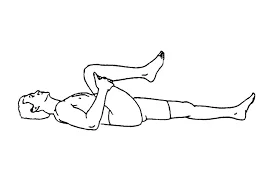
Single knee to chest
- To perform a single knee-to-chest exercise you have to take a supine lying position with your knees flexed and your feet flat on the ground.
- Now, grab your hands close one knee, and fetch that knee up toward your chest.
- Keep that knee to your chest, supporting your lower back pushed to the ground, for 10 to 20 seconds.
Double Knee-to-Chest
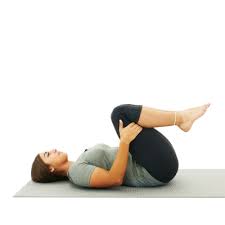
- To start double knee to the chest you can Lie on your back with your knees flexed and your feet flat on the base.
- Carry a single knee to your chest and then take the other knee. Do not raise both legs jointly. Hold for 10 to 20 seconds. Relax and drop your legs one at a time to the base. Pause for thirty seconds.
- Do this 2 to 4 times.
Lower Trunk Rotation
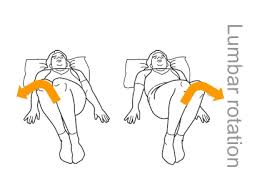
- To perform trunk rotation you have to Lie on the back with knees bowed, and turn the legs and lower torso side to side as handled.
- Repeat 20 times on both sides.
Posterior Pelvic Tilt
- To do this exercise you can Lie on your back, and move the pelvis so that the lower back flattens against the base.
- Hold this for ten seconds and repeat 8 to 10 times.
Piriformis stretch

- To start the piriformis stretch you have to lie on your back with both knees flexed or you can sit in an erect position and cross your involved leg over the other knee.
- Utilize your hands to drag your normal leg up toward your chest. The stretch will feel deep to the affected glute.
Prayer stretch
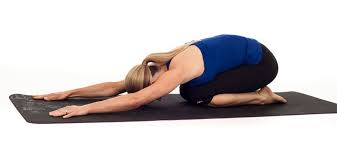
- To perform a prayer stretch you have to take a crawl position, and gently lower your buttocks towards your foot until a stretch is supposed along your back and or buttocks.
- Hold for 30 seconds do it 3 times.
Pelvic tilt standing up
- To perform a pelvic tilt standing up you have to take a standing position and contract your abdomen and buttock muscles.
- Flatten your lower back barely.
- Hold for 7 to 10 seconds and repeat ten times.
- Repeat three or more terms every daytime
Isometric gluteal/abdominal strengthening
- To perform isometric gluteal/abdominal strengthening you have to take a lie-down position with your knees flexed.
- Gently constrict your belly muscles.
- Hold for five to ten seconds, then carry out ten repetitions.
- Engage your glutes gradually.
- Ten repetitions of holding for five to ten seconds each.
- Repeat this every day three or more times.
Hip and thigh stretch
- To perform hip and thigh stretch you can stand and put your foot on a chair after you.
- Press your buttock muscles to cover your back. You should sense a stretch in the anterior of your upper leg.
- Hold 40 to 60 seconds and repeat more two times.
Seated lumbar flexion
- To start this exercise you have to sit upright in a chair. Slowly lean forward until you suppose the tension in your back.
- Do this exercise 5 times.
- Hold this position for 5 seconds.
- You can also Perform lumbar flexion with rotation to the painful side.
Standing lumbar flexion
- To do this exercise you have to Stand straight with feet extended shoulder-width apart.
- Gradually lean forward, gliding your hands down your legs, until you observe the tension in your back.
- Repeat this exercise 5 times.
- Hold this position for five seconds.
- You can also Perform lumbar flexion with rotation to the painful side.
Partial sit-ups
- To perform this exercise you have to lie on your back with your hands by your side and your knees flexed.
- Utilize your tummy muscles to lift your upper back off the ground, while exhaling.
- lift only sufficiently to get your scapula off the base.
- Do not push yourself off the base or raise your head with your arms.
- Maintain your knees flexed and your feet flat on the ground.
- You should sense the contraction only in your stomach muscles.
- slowly lower your upper body.
- Make the movements soft and comfortable.
- Repeat this exercise 8 to 10 times
- Hold this position for 2 seconds.
Partial diagonal sit-ups
- To perform partial diagonal sit-ups. you have to take a supine lying position with your hands by your side and your knees flexed.
- Utilize your tummy muscles to lift your upper back off the ground, while exhaling.
- Lift your upper body off the ground with one shoulder a little higher than the different.
- Do not push yourself off the ground or raise your head with your arms.
- Hold your knees flexed and your feet balanced on the base.
- You should sense the squeeze only in your tummy muscles.
- Complete the movement softly and comfortably.
- slowly lower your upper body.
- Repeat the movement by lifting the other shoulder higher.
- Repeat exercise 8 to 10 times.
- Hold the position for 2 seconds
Which exercise should you avoid if you have Lumbar canal stenosis?
Avoid Excessive Back Extension:

When you are standing and leaning backward then it put more strain on the vertebra when you suffer from stenosis. It also affects standing up straight, placing your hands on your hips, and leaning as far as you can. In rare cases, this kind of stenosis on the back of the vertebrae may help make space for the spinal cord by causing some inflamed tissue out of the way.
Regardless, in many cases, it shows more harmful symptoms and more aches. If you manage to experience more pain and numbness following a back extension, try to avoid that stretch, and more significantly, try to evade any movement that forces your back to go into extreme extension, i.e. anything needing you to flex over backward. The raised stenosis can make inflammation more harmful.
Avoid Long Walks or Running:
many activities are important in spinal stenosis, but too much or the incorrect type can exaggerate your pain. jogging and running are generally seen as comfortable exercises and are associated with low or mild impact. but jogging and running mostly qualify as high-impact exercises.
The repeated concussion to the knees and spine is less than other parts. On the other hand, prolonged walking for long distances instead can also aggravate back pain. Consider starting with shorter, modest distances, and producing modest gains in speed and distance without cracking into a jog.
Avoid Certain Stretches and Poses:
The earlier said back extension lives in a variety of common poses and spinal stenosis exercises, including the cobra, the bridge, numerous lower back exercises concerning hyperextension (such as the Superman), and more. While it is certainly a good idea to support the muscles of the lower back, it is distant better to avoid lumbar flexion or extension when accomplishing so. Rather, look at isometric exercises that revolve around stabilizing the back, and holding it rigid against an external force.
Avoid Loading a Rounded Back:
Free weights can be great for people with backaches, to start exercising they can take permission from a skilled physician. many activities can greatly help the muscles to help the spine and create it more comfortable to hold a healthy posture. Free-importance exercises can also sustain you address unilateral posture in your body, like varying power in the legs, hips, shoulders, and arms, which can smash in more back pain.
But when performed wrongly, free-weight activities can effortlessly lead to damage. One such example is any activity requiring hip hinging, from bent-over rows and passes to the dead-lift. Any rounding of the back may severely compromise the stability of the muscles that support the spine and put the discs under shearing stresses. Be confident to work your way up in the test and take one exercise at a time, to avoid any extreme force on the back.
Avoid Too Much Bed Rest:
It is appealing to lay in bed whenever necessary, but too much bed rest will make your muscle weak and also increases strain on your back, and contribute to inflammation. Remaining active can help you relieve pain and enhance your quality of life, at the expenditure of a few minutes a day consumed sweating and moving.
Avoid Contact Sports:
While it is good to obtain active, try to attach to sports that avoid impulsive impact and touch. Martial arts, football, basketball, and soccer are just some samples of sports where healthy activity can very fast lead to a rash tear or fracture, particularly when you come into physical connection with others.
Lifestyle changes:
These normal differences can make a change in your life:
- Remember to progress in ways that do not put a strain on your lower back.
- Adjust your place repeatedly.
- Avoid Seating down repeatedly.
- Avoid the positions that make you pain.
- Exercise every day.
- Maintain a fit weight.
- Try to maintain an erect posture.
Complications occur due to lumbar spine stenosis:
- Cauda equina syndrome
- Damaged bladder or bowel control due to sensation issues
- Problem in walking
- Paraplegia[paralysis of both lower limb]
- Difficulty in activities of daily living like sitting, standing, and walking.
FAQ
Which exercises you should avoid with lumbar spinal stenosis?
Contact sports like basketball, football, soccer, and martial arts are activities to avoid if you have lumbar stenosis. These movements can affect sudden injury to the spine, which may conduct to further trauma. Sports that involve jumping, such as jumping rope, should be skipped if you have spinal stenosis.
What might lumbar spinal stenosis cause?
It may be difficult for you to walk for extended distances if you have lumbar spinal stenosis, or you might have to lean forward to relieve the pressure on your lower back. Also possible are leg discomfort or numbness. You can struggle to maintain control over your bowel and bladder in more chronic conditions.
What is the best way to live with spinal stenosis?
When you are diagnosed with lumbar spine stenosis then may your physician advise you to take some NSAIDS and take physiotherapy treatment to reduce pain. In physiotherapy, they work on improving mobility and strengthening the core to support the back.
When I have lumbar stenosis, how should I sit?
Leaning forward, especially while sitting, often reduces pain in patients with spinal stenosis. Leaning forward can improve the area available for the nerves, according to lumbar spine studies. Standing up straight and moving about may aggravate pain.
What type of problem affects people with spinal stenosis commonly?
Lower back spinal stenosis symptoms may consist of lower back pains. A burning or painful sensation that goes through the thighs and down the legs, which generally gets worst with standing or walking and better with bending.
Can lumbar spinal stenosis be treated?
Lumbar spinal stenosis cannot be cured, however, your doctor can help you manage the problem. Physical therapy, medication, and surgery are all potential treatments.
What causes spinal stenosis to worsen?
Since the primary cause of spinal stenosis is a spinal cord contraction that aggravates the leg nerves, the condition’s symptoms tend to get worse as long as you walk without getting treatment. This should be a part of the treatment as the words’ discomfort leads to inflammation.
What is the most effective method of treating L4 and L5 spinal stenosis?
The best method for treating lumbar spinal stenosis is physical therapy.
The most conventional therapy used for lumbar spinal stenosis at L4 and L5 is physiotherapy, This will help to strengthen the core muscles and improve flexibility, stabilization, and joint mobilization. They also give heat or ice therapy, and massage to reduce pain.
What is the lumbar stenosis complication?
A potentially dangerous outcome of spinal stenosis is cauda equina syndrome. Symptoms can include paralysis or impaired bladder or bowel control. This requires urgent medical attention.


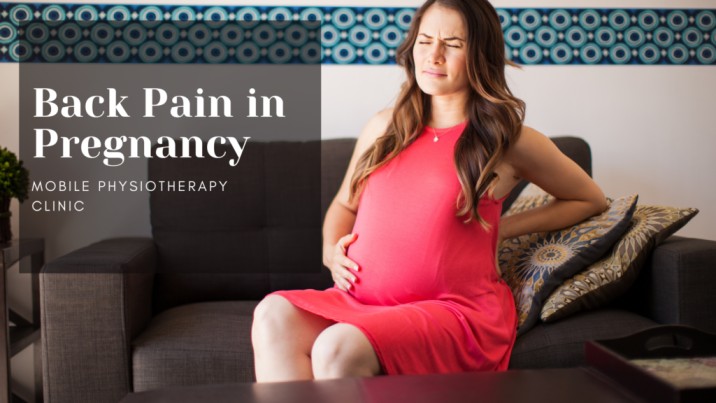


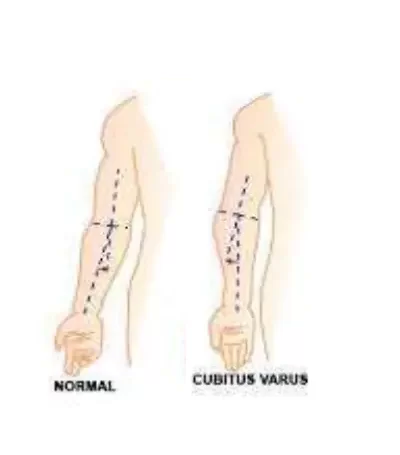
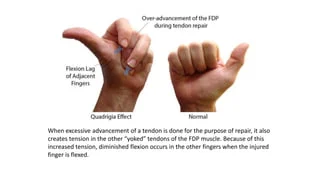
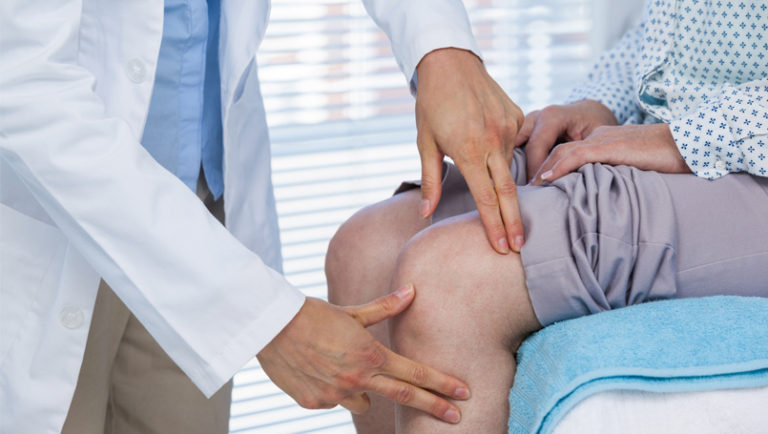
8 Comments